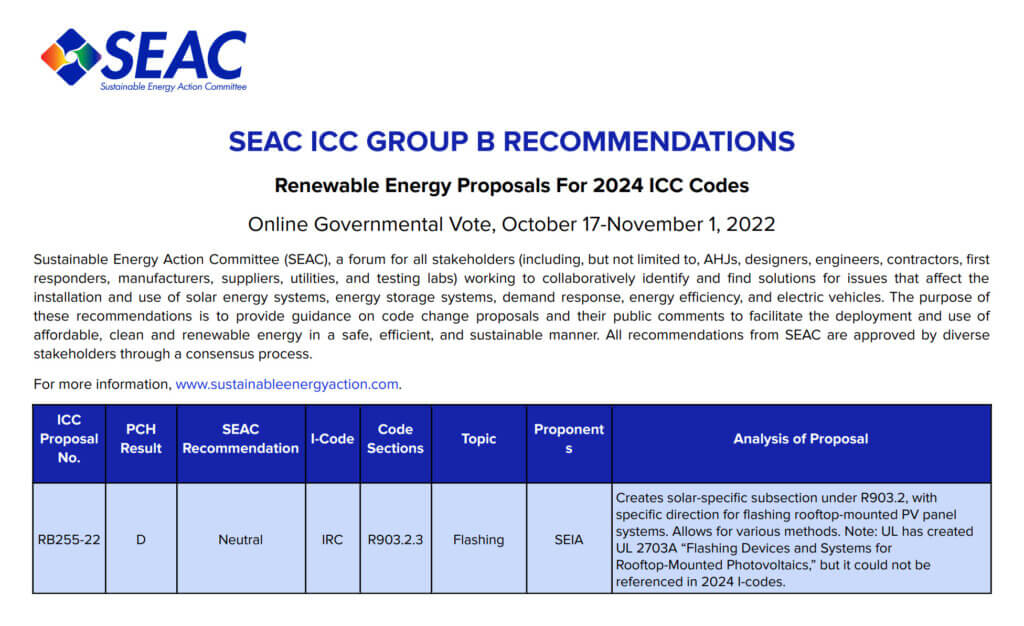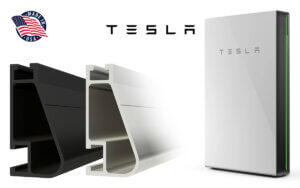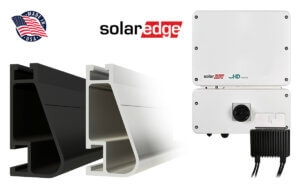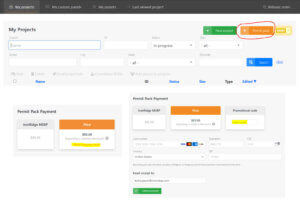Recognizing the proliferation of new roof attachments that incorporate novel flashing methods, the Solar Energy Industries Association (SEIA), IronRidge, and other stakeholders are working to develop both standards and code language that protects the industry’s long-term interest.
The International Residential Code (IRC) currently states, “Flashings shall be installed in a manner that prevents moisture from entering the wall and roof through joints in copings, through moisture permeable materials and at intersections with parapet walls and other penetrations through the roof plane (R903.2 Flashing).” Without specific reference to PV Roof Attachments, these products are currently considered “Other Flashing” and require installation according to the roofing manufacturer’s printed instructions.
Unfortunately, the roofing industry does not actually provide guidance for installers. This problem is exacerbated by new asphalt shingle designs that incorporate a stronger seal between the layers, making it more difficult to insert metallic flashings.

SEIA submitted an ICC Proposal to expand the code language to explicitly provide for non-metallic flashing systems, and for the code language to provide for their installation per the PV flashing manufacturer’s installation instructions. Within the ICC Proposal, we see reference to UL 2703A. SEIA worked with industry partners, including IronRidge, to pursue UL 2703A, “Flashing Devices and Systems for Rooftop-Mounted Photovoltaics” as a prelude to seeking an alteration to the ICC code language through the ICC proposal process.
For UL 2703A, an Outline of Investigation (the precursor to a Standard) was developed to consolidate and standardize requirements needed to evaluate flashings for the prevention of moisture entry through the roof surface. It includes protocols for testing both the product and the materials incorporated into the products’ flashing system.
While the most recent ICC review of proposed changes chose to leave the code language as it is for now, UL 2703A is still a viable metric that building officials can reference. It is actively being cited and will continue to gain acceptance. Future code cycles will continue to evaluate its incorporation into Code.
UL2703A Testing & Evaluation
Product Tests
UL 2703A evaluates the complete assembled product with the following tests:
- Wind-Driven rain (all roof types)
- Water Penetration (flat roof only)
- Impact Resistance (all roof types)
Material Tests
UL 2703A also evaluates the materials used in flashing systems, such as metals, polymers and sealants with the following tests:
- Ozone Resistance
- Water Immersion
- Elongation and Tensile Strength
- Adhesion
- Tear Resistance
- High Temperature Aging
- Ultraviolet Light Exposure
- Corrosion (as required)
Synopsis
- UL 2703A provides the testing framework to certify a product as a flashing system.
- IronRidge was the first manufacturer with products (HUG, BUG) certified as meeting this testing framework.
- The battery of tests outlined in UL 2703A gives confidence that the flashing system will function throughout its warranted period. Roof attachments, especially non-metallic ones, that have not gone through this accelerated aging and stress testing may not provide long-term viability.
- UL 2703A will become the standard by which rooftop solar attachments are evaluated. Building officials are requesting products that are tested to meet these criteria. As more officials become familiar with the availability of UL 2703A Listed products, adoption will increase.
- Industry (SEIA) recognized the need for greater diligence and is working to accelerate the adoption of this protocol and turn it into a Standard. They are also seeking to modify code language. Roof attachments that won’t perform long-term are a threat to the viability of the solar contractor’s business and the industry as a whole.
- SEIA has also referenced UL 2703A as a requirement in the ANSI/SEIA 201: Solar and Energy Storage Installation Requirements Standard: Residential and Small Commercial Systems. This Standard will soon be available for adoption by State and local organizations, creating a new baseline for how residential and small commercial solar and storage systems are installed.






